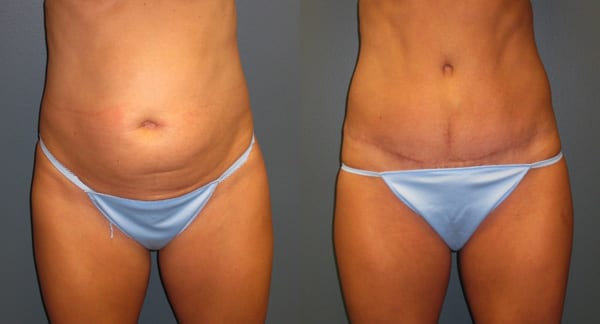Which Type of Tummy Tuck Is Best for Me?
If you have excess skin, stubborn fat, or loose abdominal muscles, a tummy tuck can help you achieve a flat and firm abdomen. Based on your unique needs, you may benefit from either a full or a mini tummy tuck. The decision between a full versus mini tummy tuck is personal, and each is best for a certain type of client.
The Full Tummy Tuck
A full tummy tuck corrects the appearance of the upper and lower abdomen. To correct excess skin, persistent fat, and stretched or weakened abdominal muscles, the surgeon places incisions below the lower abdomen and around the navel. Through the incisions, excess fat deposits and sagging skin are removed from the abdomen. The abdominal muscles are tightened, and the skin is pulled taut to create a firmer, better-defined abdominal contour.
- Best For: A full tummy tuck is best for patients who have problems in their upper and lower abdomen. The best candidates have excess skin and fat and often have a perpetual belly pooch due to distended stomach muscles. Common candidates include women who have had multiple pregnancies and individuals who have undergone moderate to major weight loss.
The Mini Tummy Tuck
A mini tummy tuck corrects the appearance of the lower abdomen only. To eliminate excess skin and fat in the lower belly, the surgeon places a single horizontal incision below the lower abdomen. This incision is smaller than the incision required for a full tummy tuck. After removing fat and skin, the relaxed muscles of the lower abdomen are tightened. The remaining skin is contoured to improve the tone and firmness of the lower abdomen.
- Best For: A mini tummy tuck is best for patients who have lax skin and excess fat isolated below the belly button. Candidates do not have the overly stretched abdominal muscles and upper abdominal issues that can be found in candidates for a full tummy tuck. Some candidates for a mini tummy tuck may have had one pregnancy or minor weight loss, but will still be generally fit with lax tissue in the lower abdomen. This technique provides more subtle results for patients with more subtle needs.

